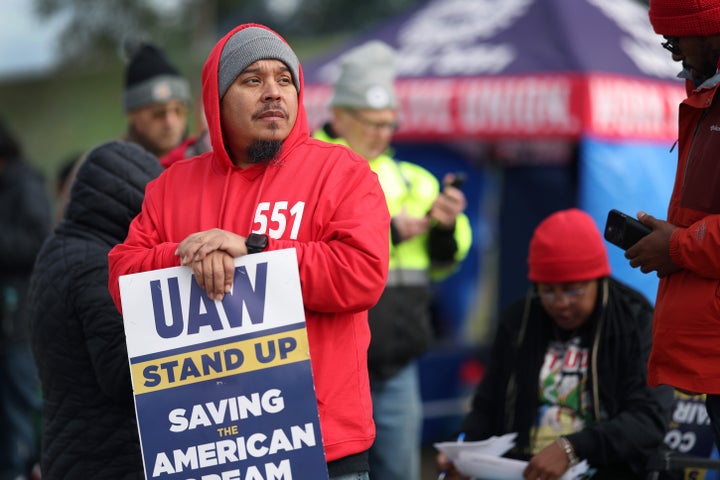Auto workers have signed off on a trio of new contracts with Ford, General Motors and Jeep parent company Stellantis, bringing closure to a more than six-week strike that rocked U.S. auto makers and showed a renewed militancy within the industry.
The United Auto Workers union announced Monday morning that 64% of members overall voted to ratify the new deals covering a total 150,000 workers. Although the Ford and Stellantis contracts were approved by healthy margins, the GM deal passed narrowly with 55% of workers in favor and 45% opposed, according to a union vote tracker.
Shawn Fain, the union’s president, said the ratification votes “locked in record gains” and recouped some of the concessions workers had made in the wake of the financial crisis of 2008.
“We have turned the tide for the American autoworker,” Fain said in a statement Monday. “The UAW is back to setting the standard. Now, we take our strike muscle and our fighting spirit to the rest of the industries we represent, and to millions of non-union workers.”
Ford CEO Jim Farley said in a statement that the Detroit-based company would be back at full production within a matter of days.
Ford workers were called back to their jobs shortly after the union reached a tentative agreement in late October. That deal was soon followed by similar agreements at GM and Stellantis.
“We are entering one of our biggest-ever new product launch years in the U.S.,” Farley said. “We need to deliver these new vehicles on time and with top quality.”
Farley added that the company needed to tackle “waste” in the supply chain.
“The reality is that this labor agreement added significant cost, and we are going to have to work very hard on productivity and efficiency to become more competitive,” he said.

Workers first walked off the job on Sept. 15. Rather than strike all facilities at once, the union chose to stop production at select facilities, initially targeting midsize trucks and SUVs. The UAW gradually expanded the strike in an unpredictable manner, eventually hitting factories that produce highly profitable large trucks and SUVs.
The deals the union reached include raises of at least 33% over four and a half years when cost-of-living adjustments are factored in. They also significantly cut down the amount of time newer workers must put in before reaching the top rate, from eight years down to three.
The union also won an agreement from Stellantis to reopen its shuttered plant in Belvidere, Illinois, and a commitment from GM to include battery-plant workers under its national union contract. Those workers are part of a joint venture between GM and LG Energy Solution.
In spite of what Fain described as record contract wins, a large share of GM workers ended up opposing the deal. The Wall Street Journal reported that many workers were dissatisfied with the provisions related to retirement benefits.
The Big Three strike was one of the most notable in a wave of big work stoppages to hit U.S. employers recently, including in health care, hospitality and Hollywood.
As HuffPost reported last month, more U.S. workers are going on strike now than have in years. Roughly 468,000 workers had taken part in strikes this year as of Oct. 11, compared with 126,800 over the same period last year, according to the Cornell University School of Industrial and Labor Relations.

